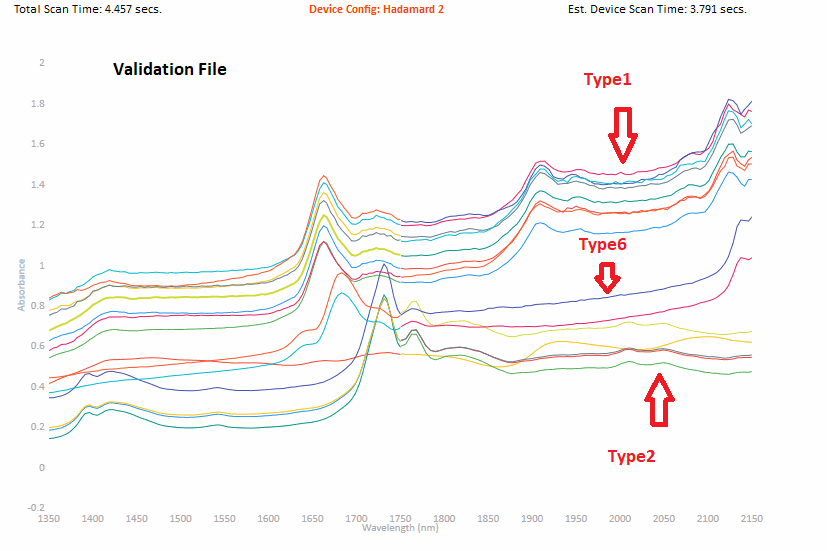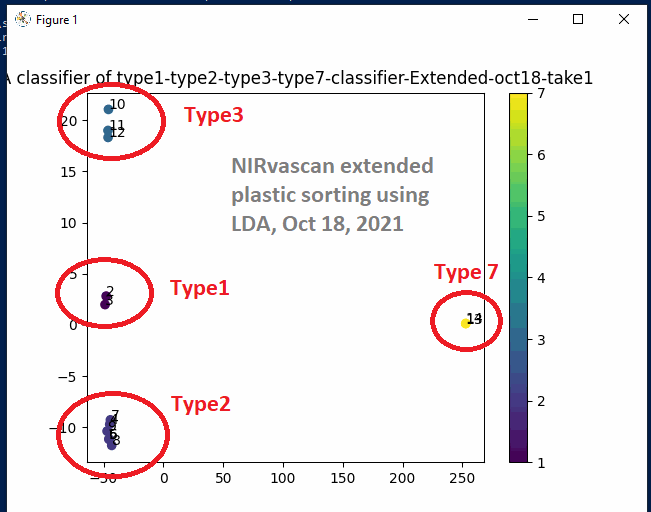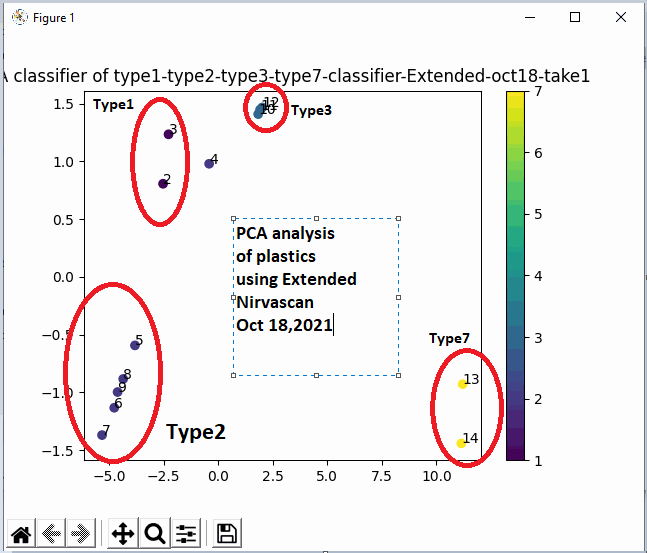PLASTIC IDENTIFICATION FOR RECYCLING
Plastics have become an important part of today’s life and have found applications ranging from reducing weight in commercial airplanes to preserving food in the refrigerators. They have also become a big source of trash as manifested by the big plastic garbage lump in the northern Pacific Ocean. The recycling of plastics is therefore very important to be able to reuse these polymers which have been formed using low-temperature injection molding. At first, the sorting of plastics for recycling is done manually by referring to their recycling code, but Near IR spectroscopy can make this process more efficient and less expensive. Reflection spectra in the 900-1700 nm or between 1350nm to 2150nm range contain the spectral signature of each type of polymer. Chemometrics techniques can be used to analyze the near IR spectra and sort different types of plastics. This has already been accomplished and plastics of the same type which were collected from different recycling bins have been identified successfully.

Plastics Spectrum
Plastics identification raw spectrum using our Nivascan Spectrometer extended range from 1350nm to 2150nm

Identification of Plastics Types with LDA
Using Nirvascan smart portable spectrometer we can identify the plastic types, 3, 1, 2, 7 easily by applying LDA, Linear Discriminant Analysis, all available on www.nirvacloud.ai

Identification of Plastics Types with PCA
Using Nirvascan smart portable spectrometer we can identify the plastic types 1, 2,3,7 easily by applying PCA, Principal Component Analysis, all available on www.nirvacloud.ai